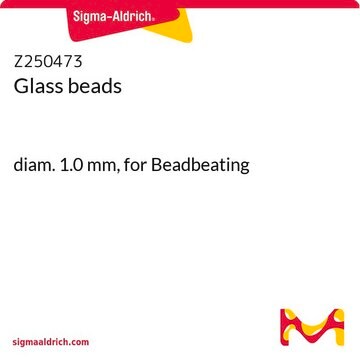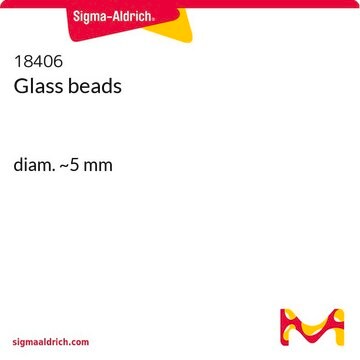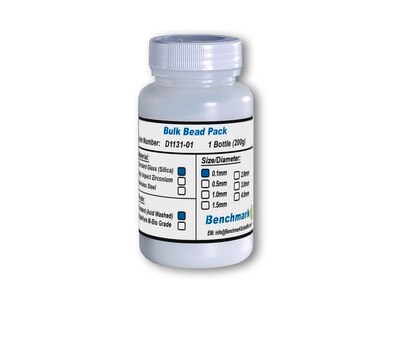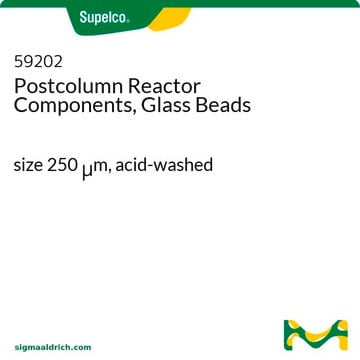추천 제품
직경
0.5 mm
유사한 제품을 찾으십니까? 방문 제품 비교 안내
일반 설명
Glass has a density of 2.5 g/cc and is the most commonly used bead media for ′Beadbeating′. Beads are sold in one pound bottles.
애플리케이션
- Extraction of Diatom DNA from Water Samples and Tissues.: This study details a method for extracting DNA from diatom samples using glass beads to enhance the mechanical disruption of cell walls, facilitating the efficient recovery of high-quality DNA for downstream applications (Zhou YC et al., 2023).
- Combination of direct boiling and glass beads increases the purity and accuracy of bacterial DNA extraction.: The research presents an improved bacterial DNA extraction technique combining direct boiling with glass beads, resulting in higher purity and accuracy of the extracted DNA, which is crucial for precise molecular analyses (Li S et al., 2023).
- Solvent Precipitation SP3 (SP4) Enhances Recovery for Proteomics Sample Preparation without Magnetic Beads.: The study explores the use of solvent precipitation SP3 with glass beads, offering an efficient alternative for proteomics sample preparation, yielding better protein recovery compared to magnetic beads (Johnston HE et al., 2022).
- Efficient isolation of brain capillary from a single frozen mouse brain for protein expression analysis.: This research demonstrates an optimized method for isolating brain capillaries from frozen mouse brains using glass beads, enabling detailed protein expression analysis critical for neuroscience research (Ogata S et al., 2021).
가장 최신 버전 중 하나를 선택하세요:
이미 열람한 고객
Yanjie Liu et al.
Yeast (Chichester, England), 37(3), 269-279 (2020-01-22)
In Saccharomyces cerevisiae under conditions of nutrient stress, meiosis precedes the formation of spores. Although the molecular mechanisms that regulate meiosis, such as meiotic recombination and nuclear divisions, have been extensively studied, the metabolic factors that determine the efficiency of
Vanessa David-Vaizant et al.
Frontiers in microbiology, 9, 2235-2235 (2018-10-16)
Wine biological aging is characterized by the development of yeast strains that form a biofilm on the wine surface after alcoholic fermentation. These yeasts, known as flor yeasts, form a velum that protects the wine from oxidation during aging. Thirty-nine
자사의 과학자팀은 생명 과학, 재료 과학, 화학 합성, 크로마토그래피, 분석 및 기타 많은 영역을 포함한 모든 과학 분야에 경험이 있습니다..
고객지원팀으로 연락바랍니다.











